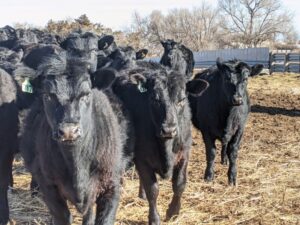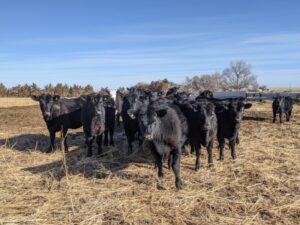Cattle Whorls
For the whorl page
I’ve been walking through the heifers every morning. They need trained just like horses do. Young cattle need to get used to people to make them easier to handle as an adult. Cows need to know not to be afraid so we can handle them easier and safer as we move them through pastures, work them, and help them as they calve.
Walking through the herd also gives me a chance to study whorls and how the heifers with those whorls react to my presence.
In the lead, always right behind me, brave curious, and bold, is 717. She has a center to low whorl with a line of feathering coming up from the whorl. That should mark her as left brain, confident, curious, unconcerned about new things. That fits her behavior, checking me out as the other calves snort and shy away.
524 has been bucking and bolting across the pen the whole time. She doesn’t have a whorl. That seems to make right brain animal, energetic, sensitive, alert. She’s curious but the first to bolt of I move, or stop. She reacts strongly to any stimuli.
In the back is 713. Her mom and grandma are my favorite cows. Calm, quiet, and easy going, they don’t get upset and are easy to handle. No surprise to find a simple center whorl on her. Average, no extremes, the cattle should be the easiest to work with. If there are no extreme’s in head shape, physical issues, or other outlying causes for difficult behavior of course.
Each whorl has its own benefits and drawbacks. A cow who isn’t afraid of anything, will be more likely to take you (get on the fight, or attack for non cattle speaking people 

